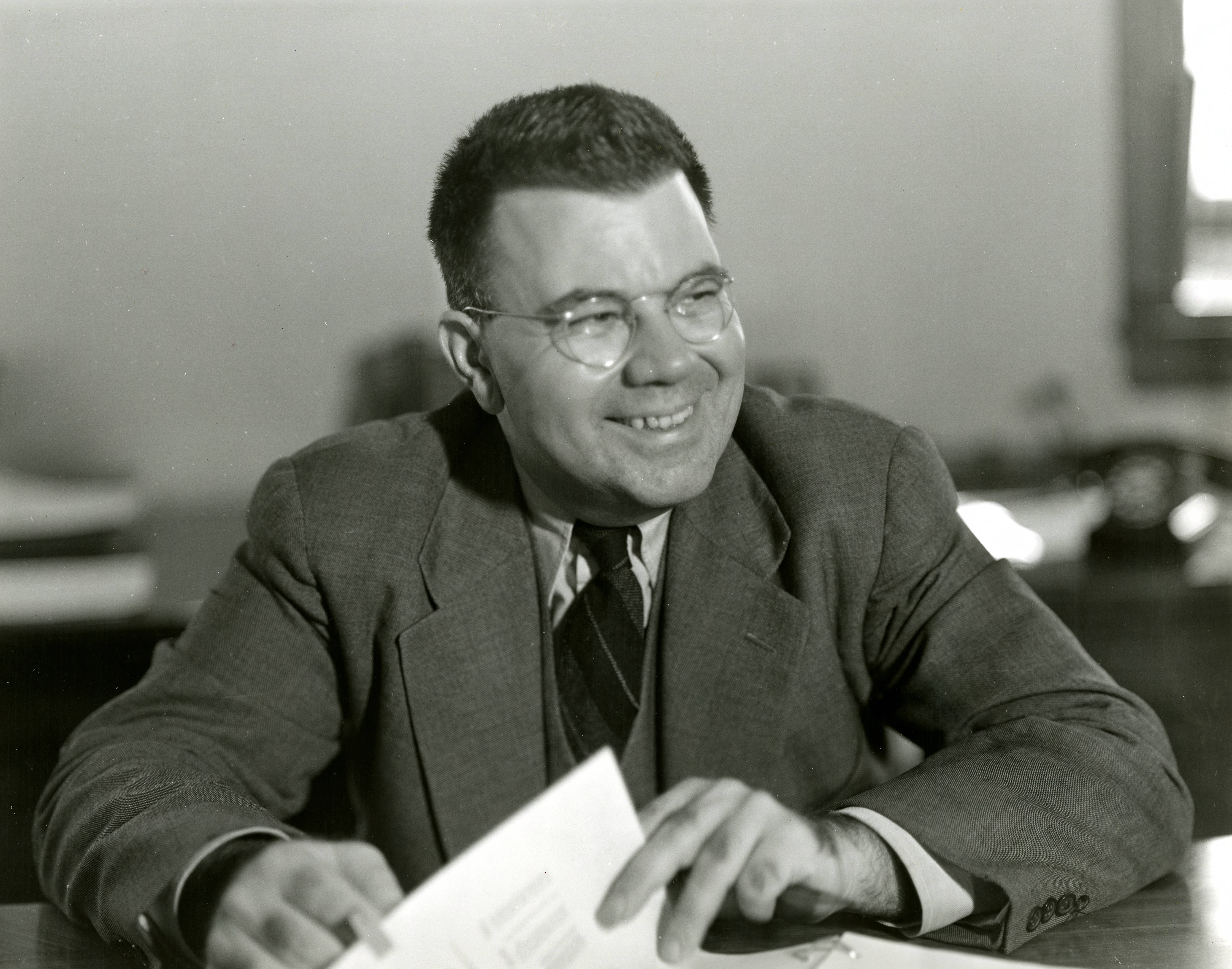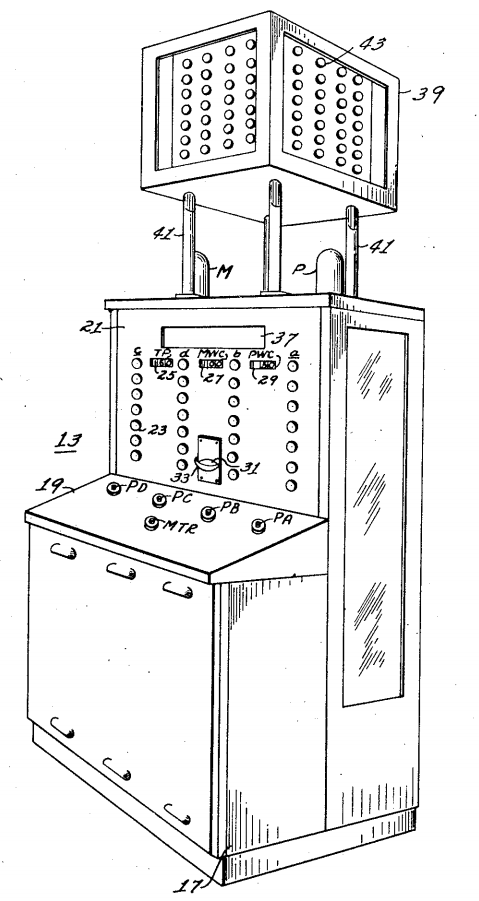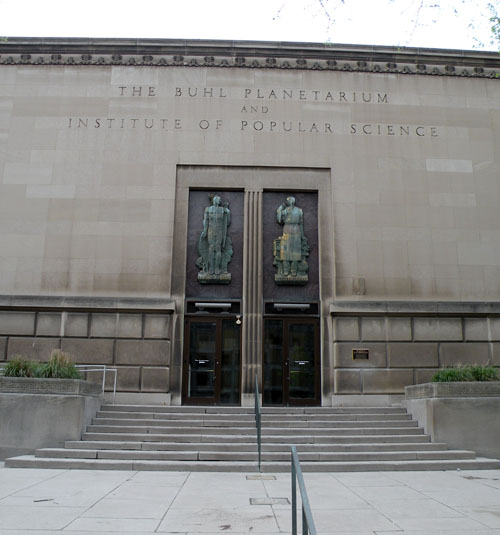Nimatron on:
[Wikipedia]
[Google]
[Amazon]
The Nimatron was an electro-mechanical machine that played Nim. It was first exhibited in April–October 1940 by the
 The
The  The machine itself was designed and built by Gerald L. Tawney and Willard A. Derr, who worked in the
The machine itself was designed and built by Gerald L. Tawney and Willard A. Derr, who worked in the
 After the fair, the Nimatron was kept for some period of time at the Buhl Planetarium and Institute of Popular Science Building in Pittsburgh. The last known time it was presented outside the institute was in 1941 at a convention of the
After the fair, the Nimatron was kept for some period of time at the Buhl Planetarium and Institute of Popular Science Building in Pittsburgh. The last known time it was presented outside the institute was in 1941 at a convention of the
Westinghouse Electric Corporation
The Westinghouse Electric Corporation was an American manufacturing company founded in 1886 by George Westinghouse and headquartered in Pittsburgh, Pennsylvania. It was originally named "Westinghouse Electric & Manufacturing Company" and was ...
at the 1939-1940 New York World's Fair to entertain fair-goers. Conceived of some months prior by Edward Condon
Edward Uhler Condon (March 2, 1902 – March 26, 1974) was an American nuclear physicist, a pioneer in quantum mechanics, and a participant during World War II in the development of radar and, very briefly, of nuclear weapons as part of the Ma ...
and built by Gerald L. Tawney and Willard A. Derr, the device was a non-programmable digital computer
A computer is a machine that can be programmed to automatically carry out sequences of arithmetic or logical operations (''computation''). Modern digital electronic computers can perform generic sets of operations known as ''programs'', wh ...
composed of electro-mechanical relay
A relay
Electromechanical relay schematic showing a control coil, four pairs of normally open and one pair of normally closed contacts
An automotive-style miniature relay with the dust cover taken off
A relay is an electrically operated switc ...
s which could respond to players' choices in the game in a dozen different patterns. The machine, which weighed over a metric ton, displayed four lines of seven light bulbs both in front of the player and on four sides of an overhead cube. Players alternated turns with the machine in removing one or more lights from one of the rows until the lights were all extinguished. The calculations were purposely delayed to give the illusion that the machine was considering moves, and winners received a token.
The reception of the machine during the fair was positive, with around 100,000 games of Nim played. After the fair it was moved to the Buhl Planetarium and Institute of Popular Science Building in Pittsburgh. Despite this success, Condon considered the Nimatron a failure, because he had designed and intended it to be solely a piece of entertainment for fair-goers, but within years of the exhibition programmable digital computers began to be produced around the world by other companies and groups that used some of the same principles around storing digital information. The Nimatron is considered one of the first electro-mechanical games and a precursor to computer games, but its direct impact on digital computers and computer games is minimal. It may, however, have inspired the Nimrod
Nimrod is a Hebrew Bible, biblical figure mentioned in the Book of Genesis and Books of Chronicles, the Books of Chronicles. The son of Cush (Bible), Cush and therefore the great-grandson of Noah, Nimrod was described as a king in the land of Sh ...
computer, which was demonstrated at the 1951 Festival of Britain
The Festival of Britain was a national exhibition and fair that reached millions of visitors throughout the United Kingdom in the summer of 1951.
Labour Party cabinet member Herbert Morrison was the prime mover; in 1947 he started with the ...
playing Nim using banks of lightbulbs like the Nimatron eleven years prior.
Development
 The
The 1939 New York World's Fair
The 1939 New York World's Fair (also known as the 1939–1940 New York World's Fair) was an world's fair, international exposition at Flushing Meadows–Corona Park in Queens, New York City, New York, United States. The fair included exhibitio ...
was held in April—October 1939 and April—October of 1940, featuring exhibits from countries and companies worldwide. A major exhibitor was the Westinghouse Electric Corporation
The Westinghouse Electric Corporation was an American manufacturing company founded in 1886 by George Westinghouse and headquartered in Pittsburgh, Pennsylvania. It was originally named "Westinghouse Electric & Manufacturing Company" and was ...
, and during the break in the fair it was looking for new exhibits to add for the second season. Edward Condon
Edward Uhler Condon (March 2, 1902 – March 26, 1974) was an American nuclear physicist, a pioneer in quantum mechanics, and a participant during World War II in the development of radar and, very briefly, of nuclear weapons as part of the Ma ...
, a nuclear physicist
Nuclear physics is the field of physics that studies atomic nuclei and their constituents and interactions, in addition to the study of other forms of nuclear matter.
Nuclear physics should not be confused with atomic physics, which studies the ...
and pioneer of quantum mechanics
Quantum mechanics is the fundamental physical Scientific theory, theory that describes the behavior of matter and of light; its unusual characteristics typically occur at and below the scale of atoms. Reprinted, Addison-Wesley, 1989, It is ...
and an Associate Director of Research at the company, proposed making a machine that could play Nim. In Nim, players take turns removing at least one object from a set of objects, with the goal of being the player who removes the last object; gameplay options can be modeled mathematically. In the version of the game Condon proposed using, there are multiple sets of objects, and on each turn the player can only remove objects from a single set. Condon, who claims to have come up with the idea while talking to another employee on his lunch break, knew that mathematically the model could be expressed with the same binary notation that was used in the circuits for Geiger counter
A Geiger counter (, ; also known as a Geiger–Müller counter or G-M counter) is an electronic instrument for detecting and measuring ionizing radiation with the use of a Geiger–Müller tube. It is widely used in applications such as radiat ...
s. The proposal was not intended to showcase any particular technology, but only to serve as entertainment for the fair-goers. The result, named Nimatron, was an early non-programmable digital computer
A computer is a machine that can be programmed to automatically carry out sequences of arithmetic or logical operations (''computation''). Modern digital electronic computers can perform generic sets of operations known as ''programs'', wh ...
, as it could retain the state of the game in binary and respond according to which mechanical switches were flipped, though no changes could be made without physically modifying the machine.
 The machine itself was designed and built by Gerald L. Tawney and Willard A. Derr, who worked in the
The machine itself was designed and built by Gerald L. Tawney and Willard A. Derr, who worked in the relay
A relay
Electromechanical relay schematic showing a control coil, four pairs of normally open and one pair of normally closed contacts
An automotive-style miniature relay with the dust cover taken off
A relay is an electrically operated switc ...
division of Westinghouse. Although electronic vacuum tube
A vacuum tube, electron tube, thermionic valve (British usage), or tube (North America) is a device that controls electric current flow in a high vacuum between electrodes to which an electric voltage, potential difference has been applied. It ...
s were faster than electro-mechanical relays at processing information, the machine was designed and built with electro-mechanical relays as vacuum tubes were less robust and speed was not an issue. Even with relays, the machine was considered too fast; it could still make its turn in milliseconds as opposed to the microseconds it would have taken with vacuum tubes, which was felt to be demoralizing to players. The team added a delay relay to the game of a couple seconds to make it appear that the machine was thinking about the move to make instead of the physical algorithm nearly instantly responding. The state of the game was represented with four columns of seven lights; on the player's turn they decided on a column to take lights from and pressed a button one or more times to turn out lights in that column, then pressed another to give the machine a turn. The set of lights were displayed on the front of the machine, as well as on four sides of a cube above the machine to allow spectators to follow the game. If the player won, the machine produced a token with the inscription "Nim Champ". The machine, described by ''Popular Mechanics
''Popular Mechanics'' (often abbreviated as ''PM'' or ''PopMech'') is a magazine of popular science and technology, featuring automotive, home, outdoor, electronics, science, do it yourself, and technology topics. Military topics, aviation an ...
'' as having 116 relays and over two miles of copper wire, and by ''The New York Times
''The New York Times'' (''NYT'') is an American daily newspaper based in New York City. ''The New York Times'' covers domestic, national, and international news, and publishes opinion pieces, investigative reports, and reviews. As one of ...
'' as being a robot eight feet tall and three feet wide, encased in a metal box, weighed over a metric ton. Westinghouse, on behalf of Condon, Tawney, and Derr, filed a patent application with the United States on April 26, 1940 and obtained it on September 24, 1940.
Presentation
The Nimatron was exhibited in the second half of the New York World's Fair in 1940. The game was a success with fair-goers, with Condon later stating that it was played over 100,000 times. The machine included counters for how many times it was played and how many times the player had won, with the Nimatron winning 90,000 times. This count was skewed, however, by the operators of the machine; although it appeared complicated, the machine could only play the game in a dozen or so preset patterns, meaning that the operators could learn the patterns and beat the machine at any time in order to demonstrate the fair-goers that it could be done. As its creators intended, the Nimatron was not viewed as a technological advancement but as an entertaining amusement; in an account of the fair, ''The New York Times
''The New York Times'' (''NYT'') is an American daily newspaper based in New York City. ''The New York Times'' covers domestic, national, and international news, and publishes opinion pieces, investigative reports, and reviews. As one of ...
'' placed it under a "novelty" subheading along with the exhibit of Elsie the Cow
Elsie the Cow is a cartoon cow developed as a mascot for the Borden Dairy Company in 1936 to symbolize the "perfect dairy product". Since the demise of Borden in the mid-1990s, the character has continued to be used in the same capacity for the ...
, the advertising icon of Borden.
Legacy
 After the fair, the Nimatron was kept for some period of time at the Buhl Planetarium and Institute of Popular Science Building in Pittsburgh. The last known time it was presented outside the institute was in 1941 at a convention of the
After the fair, the Nimatron was kept for some period of time at the Buhl Planetarium and Institute of Popular Science Building in Pittsburgh. The last known time it was presented outside the institute was in 1941 at a convention of the Allied Social Science Associations
The Allied Social Science Associations (ASSA) is a group of academic and professional organizations that are officially recognized by the American Economic Association (AEA) and are related to the study of social sciences. As of 2007, there are ...
in New York City, with its exhibition sponsored by the American Statistical Association
The American Statistical Association (ASA) is the main professional organization for statisticians and related professionals in the United States. It was founded in Boston, Massachusetts, on November 27, 1839, and is the second-oldest continuous ...
and the Institute of Mathematical Statistics
The Institute of Mathematical Statistics is an international professional and scholarly society devoted to the development, dissemination, and application of statistics and probability. The Institute currently has about 4,000 members in all parts ...
. It is unknown how long it stayed on display, though as late as 1951 it was reported to still be present at the institute.
The Nimatron was the first computing device dedicated solely to gaming. Condon claimed in an article for ''The American Mathematical Monthly
''The American Mathematical Monthly'' is a peer-reviewed scientific journal of mathematics. It was established by Benjamin Finkel in 1894 and is published by Taylor & Francis on behalf of the Mathematical Association of America. It is an exposito ...
'' in 1942 that "The Nimatron serves no other useful purpose than to entertain, unless it be to illustrate how a set of electrical relays can be made to make a 'decision' in accordance with a fairly simple mathematical procedure." A similar, much smaller Nim-playing device was described in ''The American Mathematical Monthly'' in 1948 using different types of circuits, and was explicitly compared by the authors to the Nimatron. Despite the success of the Nimatron at the World's Fair, Condon later considered the machine as a failure because he had viewed it solely as an entertaining device without practical application and did not pursue anything further with the concept, but within years fully-programmable digital computers began to be created by other companies and groups using some of the same principles for storing and handling digital numbers. One such digital general-purpose computer was the Nimrod
Nimrod is a Hebrew Bible, biblical figure mentioned in the Book of Genesis and Books of Chronicles, the Books of Chronicles. The son of Cush (Bible), Cush and therefore the great-grandson of Noah, Nimrod was described as a king in the land of Sh ...
, which was demonstrated at the 1951 Festival of Britain
The Festival of Britain was a national exhibition and fair that reached millions of visitors throughout the United Kingdom in the summer of 1951.
Labour Party cabinet member Herbert Morrison was the prime mover; in 1947 he started with the ...
running a program to play Nim using banks of lightbulbs as the output, and which may have been potentially inspired by the Nimatron.
References
Sources
* * * * {{refend Computer-related introductions in 1940 Early history of video games Electro-mechanical computers Electronic games